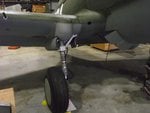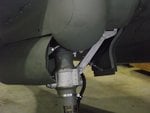What was the weight penalty of the landing gear on the P36 and P40 over a standard inward retracting setup?
What was the top speed penalty for the P36? For the P40?
What advantage did the P36/P40 landing gear have over a standard inward retracting landing gear?
What was the top speed penalty for the P36? For the P40?
What advantage did the P36/P40 landing gear have over a standard inward retracting landing gear?


